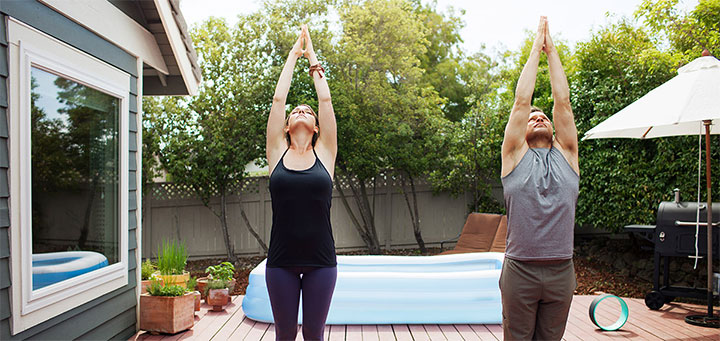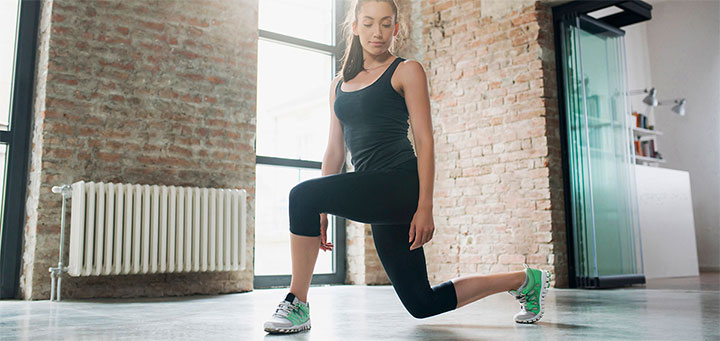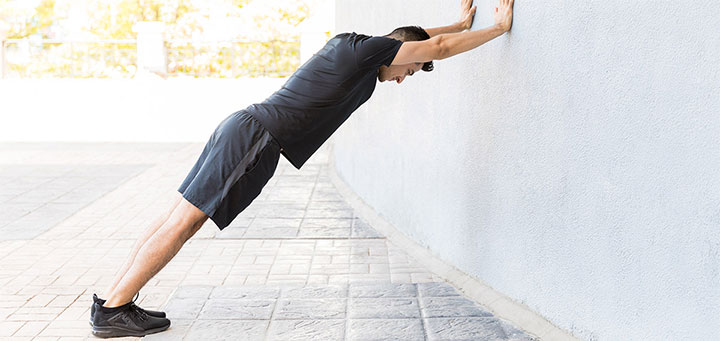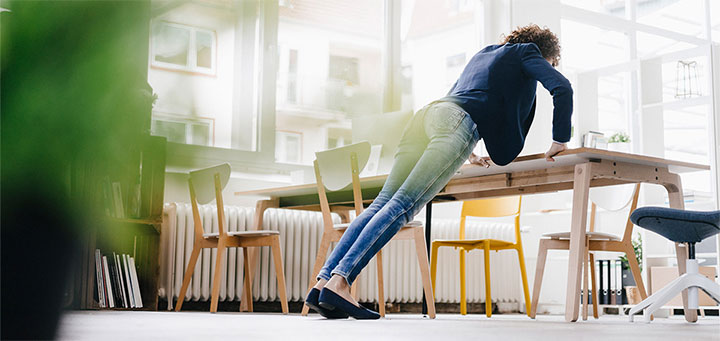Mini-quiz: Which New Year’s resolution makes the Top 10 list every year?
- Lose weight
- Eat better
- Reduce stress
Answer: D—all of the above. Each of these goals can be quite an undertaking, and most Americans abandon their New Year’s resolutions by mid-February.
If your 2020 goals include feeling and looking healthier, here’s a way to tackle weight loss, nutrition, and stress with one addition to your daily routine: Exercise more (spoiler alert: it’s a top resolution too).
By incorporating physical movement into your daily life, you’re more likely to accomplish multiple wellness goals instead of focusing on just one. For example, dieting can be emotionally and physically stressful, leading to discouragement, and the next thing you know, that resolution has flown south for the year.
Benefits of exercise
What can exercise really do for you?
- Increase your metabolism so that your body continues to burn calories after your workout
- Release brain chemicals called endorphins to help elevate your mood
- Increase flexibility, balance, and core stability with stretching routines
- Maintain your bone density through weight-bearing moves
- Control blood glucose levels through resistance training1
As your energy level increases and you start to see the effects of exercise, you’re more likely to make food choices that support rather than sabotage your efforts.
The key to developing an exercise routine that you can stick with is customization. If a move is too strenuous, don’t be afraid to modify it to help prevent injury. And remember, muscle fatigue is part of the process; soreness after working out is expected. But feeling pain while exercising could mean you’re hurting yourself. The phrase “no pain, no gain” is outdated and possibly even dangerous.
Morning starters
If you’re new to exercise or are returning to an active lifestyle, start s-l-o-w-l-y with low-impact moves. When you wake up in the morning, practice this yoga-style series of simple moves to warm up your muscles, increase blood flow, and improve flexibility. The whole routine takes less than 10 minutes, but you can extend it for as long as you like:
Pose 1

- Stand with feet together (or slightly apart if your balance isn’t the best), hands down to your sides, palms forward.
- While inhaling deeply and slowly, raise your straightened arms slowly until your palms touch above your head. Try not to let your shoulders hunch upward.
- While exhaling slowly and completely, lower your straightened arms back to your side, palms forward.
- Repeat steps 2 and 3 five times.
Pose 2

Add this next pose when you feel warmed up and balanced:
- Same as Step 1 above: Stand with feet together (or slightly apart if your balance isn’t the best), hands down to your sides, palms forward.
- Same as Step 2 above: While inhaling deeply and slowly, raise your straightened arms slowly until your palms touch above your head. Try not to let your shoulders hunch upward.
- While exhaling slowly and completely, bend forward at the waist (keep your back straight) while bringing your straightened arms down to your sides and then toward the floor in front of your legs/feet. Stretch your fingers toward the floor but don’t worry if you can’t touch your toes or the floor.
- Return to Step 2 position.
- Repeat steps 2 and 3 five times.
Tip: Exercising in sunlight—especially while outdoors—is a great natural energizer and motivator. Sunlight helps us produce vitamin D, another mood-booster.2
Low impact
Here are a few strength moves that require no more than 10 minutes and your body weight. Bonus: You can do them anytime, at home or in your office. Just take off shoes with heels:
Wall push-ups

- Facing a wall, raise your straightened arms to shoulder height; walk forward until your palms are flattened against the wall. Keep your hands shoulder-width apart. Place your feet together.
- While inhaling slowly and deeply, keeping your back straight and your core engaged, lean toward the wall as far as you comfortably can. Try to keep elbows in line with your hands and shoulders, and your heels on the floor. If this move is too strenuous for your arms, lower your hands a bit on the wall.
- Exhale slowly and return to the starting position.
- Repeat five to 10 times.
Tilted plank

Planks are a fantastic overall body exercise. But if you have shoulder or back challenges, they’re almost impossible to do without pain. But you can get nearly the same results by modifying the wall push-up into a tilted plank.
- Place your hands on a desk or lower horizontal surface instead of a wall.
- Keeping your back straight and core engaged, inhale slowly and bend your arms and lower yourself as far as you comfortably can. Hold the position for five seconds (more or less depending on your fitness).
- Exhale slowly and straighten your arms again. As your strength increases, you can try standing farther away from the furniture to increase the degree of difficulty.
- Repeat five to 10 times, depending on your strength level.
High impact
When you’re ready to push yourself, try high-intensity interval training3 (HIIT—pronounced “hit”). HIIT gives the entire body—including the heart and lungs—a solid workout in about 20 minutes or less. Check out HIIT videos and apps,4 some of which break up the routine into segments you can do two or three times in one day.
Recovery
Recovery gives your body time to adjust to the load, lets your muscles heal and strengthen, and helps maintain your energy levels day to day. If you’re doing HIIT, you’ll want to alternate workout and rest days.
Be sure to drink plenty of fluids to aid your recovery. A good rule of thumb is half your body weight in ounces (i.e., if you weigh 160 pounds, aim for 80 ounces—10 glasses—a day). Get plenty of rest and treat sore muscles with massages, steam room or sauna time, or a hot bath with Epsom salts.
Let Teladoc help
Sometimes no matter how careful you are, overexertion can happen, resulting in back pain or a minor strain or sprain. Also, if you enjoy working out at a fitness center, you can be exposed to bacteria and viruses like the flu.
The next time you’re wrestling with a non-emergency condition, you can rely on Teladoc to help provide relief quickly and conveniently 24/7, anywhere you are. Our U.S. board-certified physicians can make diagnoses, recommend treatments, and prescribe medications when medically necessary. Skip the expense of an ER and the time-consuming wait in a doctor’s office.
Use the app to request a visit and get appointment reminders, see and talk with the doctor in the privacy of your home or office, and even select a nearby pharmacy.
Good luck, pace yourself, and enjoy your workouts!
References
1https://care.diabetesjournals.org/content/29/8/1933
2https://www.healthline.com/nutrition/vitamin-d-deficiency-symptoms#section4
3https://www.self.com/story/a-sweaty-24-minute-cardio-workout-you-can-do-in-your-living-room
4https://www.netsolutions.com/insights/best-hiit-workout-apps/
This portion of the Teladoc website occasionally offers health, fitness, and nutritional information and is provided for educational purposes only. You cannot rely on any information provided here as a substitute for or replacement of professional medical advice, diagnosis, or treatment. Teladoc cannot assure that the information contained on this site always includes the most recent findings or developments with respect to the particular subject matter covered.
If you ever have any concerns or questions about your health, you should always consult with a physician or other healthcare professional. Do not disregard, avoid, or delay obtaining medical or health-related advice from your healthcare professional because of something you may have read on this site. The use of any information provided on this site is solely at your own risk.
If you are in the United States and think you are having a medical or health emergency, call your healthcare professional, or 911, immediately.




